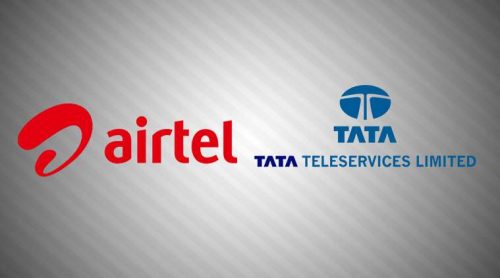 In the dynamic landscape of the Indian telecommunications industry, significant transformations often mark pivotal moments in the sector’s evolution. One such moment came in 2017, when Tata Teleservices, a prominent player with a storied history in the telecom market, embarked on a transformative journey that would reshape its future. This journey culminated in its merger with Bharti Airtel, one of India’s leading telecom giants, signifying the end of an era for Tata Teleservices.
In the dynamic landscape of the Indian telecommunications industry, significant transformations often mark pivotal moments in the sector’s evolution. One such moment came in 2017, when Tata Teleservices, a prominent player with a storied history in the telecom market, embarked on a transformative journey that would reshape its future. This journey culminated in its merger with Bharti Airtel, one of India’s leading telecom giants, signifying the end of an era for Tata Teleservices.
Founded as part of the esteemed Tata Group, Tata Teleservices had been a key player in India’s telecom sector, known for its innovative approaches and ambitious market strategies. The company, through its Tata Indicom and later Tata Docomo brands, had contributed significantly to the evolution of telecom services in India. However, amidst a fiercely competitive market and escalating operational challenges, Tata Teleservices found itself at a crossroads.
Bharti Airtel, on the other hand, had steadily ascended to become a market leader, renowned for its expansive network, diverse service offerings, and strategic growth initiatives. The merger with Tata Teleservices represented a strategic consolidation, aimed at enhancing Airtel’s market position, expanding its customer base, and consolidating its spectrum assets.
This merger marked the end of Tata Teleservices as an independent entity and signaled a new chapter in the Indian telecom landscape. It was a strategic move that reshaped market dynamics, impacted customer experiences, and set the stage for future developments in the industry.
In this article, we will delve into the journey of Tata Teleservices from its inception to its merger with Bharti Airtel. We will explore the factors that led to the merger, the implications for both companies and their customers, and the broader impact on the Indian telecom sector. Join us as we unravel the story of how Tata Teleservices became part of Bharti Airtel and what this transition means for the future of telecommunications in India.
1. Background of Tata Teleservices
- Founding and Early Years:
- Establishment: How Tata Teleservices was formed and its initial focus on providing telecom services.
- Early Innovations: Key innovations and market strategies, such as the introduction of Tata Indicom and Tata Docomo.
- Growth and Development:
- Market Expansion: Expansion into new regions and services, including the launch of 3G and 4G networks.
- Customer Base: Growth in subscriber numbers and market share over the years.
- Challenges and Struggles:
- Financial Struggles: Financial difficulties and operational challenges faced by Tata Teleservices.
- Competitive Pressures: Increased competition from new entrants and established players in the telecom industry.
2. Bharti Airtel’s Overview
- Origins and Expansion:
- Founding: History of Bharti Airtel’s founding and early operations.
- Growth Trajectory: Major milestones, including national and international expansion.
- Strategic Positioning:
- Market Leadership: How Airtel established itself as a leading player in the telecom sector.
- Innovation and Services: Key innovations and services offered by Airtel, such as Airtel Xstream and Airtel Payments Bank.
3. The Merger Process
- Announcement and Deal Details:
- Initial Announcement: Details of the merger announcement in 2017, including key dates and stakeholders.
- Terms of the Agreement: Breakdown of the merger terms, including the transfer of Tata Teleservices’ assets, spectrum, and customer base to Airtel.
- Regulatory and Legal Aspects:
- Regulatory Approvals: Overview of the regulatory process, including approvals from the Department of Telecommunications (DoT) and Competition Commission of India (CCI).
- Legal Considerations: Legal aspects of the merger and any challenges faced during the process.
- Integration Process:
- Transition Strategy: How Tata Teleservices’ operations were integrated into Bharti Airtel.
- Customer Transition: Process of transferring Tata Teleservices customers to Airtel, including communication and support.
4. Implications of the Merger
- Impact on Tata Teleservices:
- Operational Closure: The cessation of Tata Teleservices as an independent entity and the rebranding of its services.
- Legacy Contributions: Contributions of Tata Teleservices to the Indian telecom industry, including technological advancements and service innovations.
- Impact on Bharti Airtel:
- Enhanced Market Position: How the merger strengthened Airtel’s market position, expanded its customer base, and increased its spectrum holdings.
- Competitive Edge: Advantages gained by Airtel in terms of market share and operational efficiency.
- Impact on Customers:
- Service Continuity: How Airtel ensured a smooth transition for Tata Teleservices customers.
- Service Changes: Changes in service plans, network quality, and customer support experienced by former Tata Teleservices customers.
5. Market Impact and Industry Response
- Industry Consolidation:
- Market Dynamics: How the merger contributed to market consolidation and affected the competitive landscape.
- Impact on Competitors: Reactions and strategic responses from other telecom operators in the industry.
- Consumer Reactions:
- Customer Feedback: Reactions from Tata Teleservices customers regarding the transition to Airtel.
- Market Perception: Public and media perception of the merger and its outcomes.
6. Legacy and Future Outlook
- Tata Teleservices’ Legacy:
- Innovative Contributions: Recap of Tata Teleservices’ role in shaping the Indian telecom sector and its key innovations.
- Historical Significance: Historical significance of Tata Teleservices in the context of Indian telecom evolution.
- Bharti Airtel’s Future:
- Strategic Position: How Airtel is positioned for future growth and its plans for expanding its services and market reach.
- Industry Trends: Emerging trends in the telecom sector and how Airtel is preparing to adapt and lead.
Conclusion
- Summary of Key Points: Recap the main aspects of the merger and its implications.
- Final Thoughts: Reflect on the significance of the merger for the Indian telecom industry and the future prospects of Bharti Airtel.
Additional Sections (Optional)
- Quotes and Testimonials: Include quotes from industry experts, company executives, or customers to provide diverse perspectives.
- Visuals and Data: Add charts, graphs, and images to illustrate the impact of the merger and market changes.








